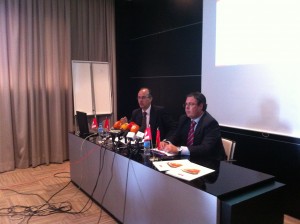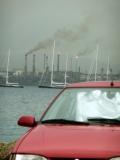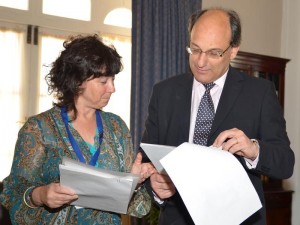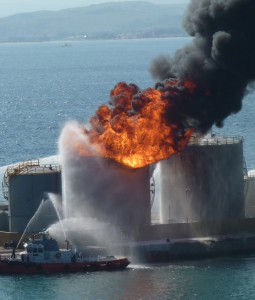FUND RAISING SWIM – Donations to sponsor Chris and Adam at http://www.justgiving.com/Swim4Whales
The ESG was contacted yesterday by Chris Shepherd, one of two swimmers about to embark on a highly challenging swim that will involve Tarifa -Morocco and back in one day! The aim is to raise funds for the Whale and Dolphin Conservation Society that carries out vital work in protecting dolphin and whales the world over, and importantly, striving for a ban on hunting of these intelligent and wonderful marine mammals. See the text below for more information and link for sending your donation today. Please support this very worthy cause. Thank you.
(See: http://www.wdcs.org.uk/gibraltar_swimmers.php)
BACKGROUND
Gibraltar swimmers
Adam and Chris’ swim certainly seems like the toughest challenge that anyone has undertaken for WDCS. Both have already swum the English Channel but they are now in training to swim the Straits of Gibraltar from Tarifa in Spain, to Tangier in Morocco… and back again! No British person has ever swum there and back before now and when they enter the water sometime between the 27th June and 5th July 2011 (tide depending), they will face some hair-raising obstacles.
The reason this swim has such a fearsome reputation is mainly due to the very strong tides that Adam and Chris will face; far stronger than the English Channel crossing. The stark reality is that they will have to swim quickly across one way (around a steady 3mph) to stand any chance of making it back! They will have to maintain this constant speed for around 14 hours.
As if that wasn’t tough enough, there are also other dangers. The temperature of the water will be as low as 14 degrees and so hypothermia is a distinct possibility. In addition the water is very choppy making sea sickness whilst swimming a factor, and the boat traffic in the area makes it one of the busiest seaways in the world. They will attempt to swim in hat and trunks (not wet suits) the total distance is 24 miles, which is several miles longer than the Channel swim to France.
“We will be swimming in waters inhabited by as many as seven different types of whale, the aim being to reach out to people and highlight the massive issue of commercial whaling,” says Adam.
“We wanted to test ourselves physically and mentally to the limit in order to raise money for the Whale and Dolphin Conservation Society, as they work tirelessly to bring an end to commercial whale hunts in places like Iceland and Norway. These hunts are cruel, go against international agreements and are unnecessary – the meat is largely frozen and stored as it is not popular anymore.
“Their work and research makes a huge difference to the conservation and preservation of the whale population and every penny donated will provide us with all the motivation we need to take on this daunting challenge!”
WDCS is humbled by their efforts to raise money to help with our anti whaling campaign, and we hope the preparation goes…swimmingly. More updates from Chris and Adam will follow.
Sponsor Chris and Adam at http://www.justgiving.com/Swim4Whales










